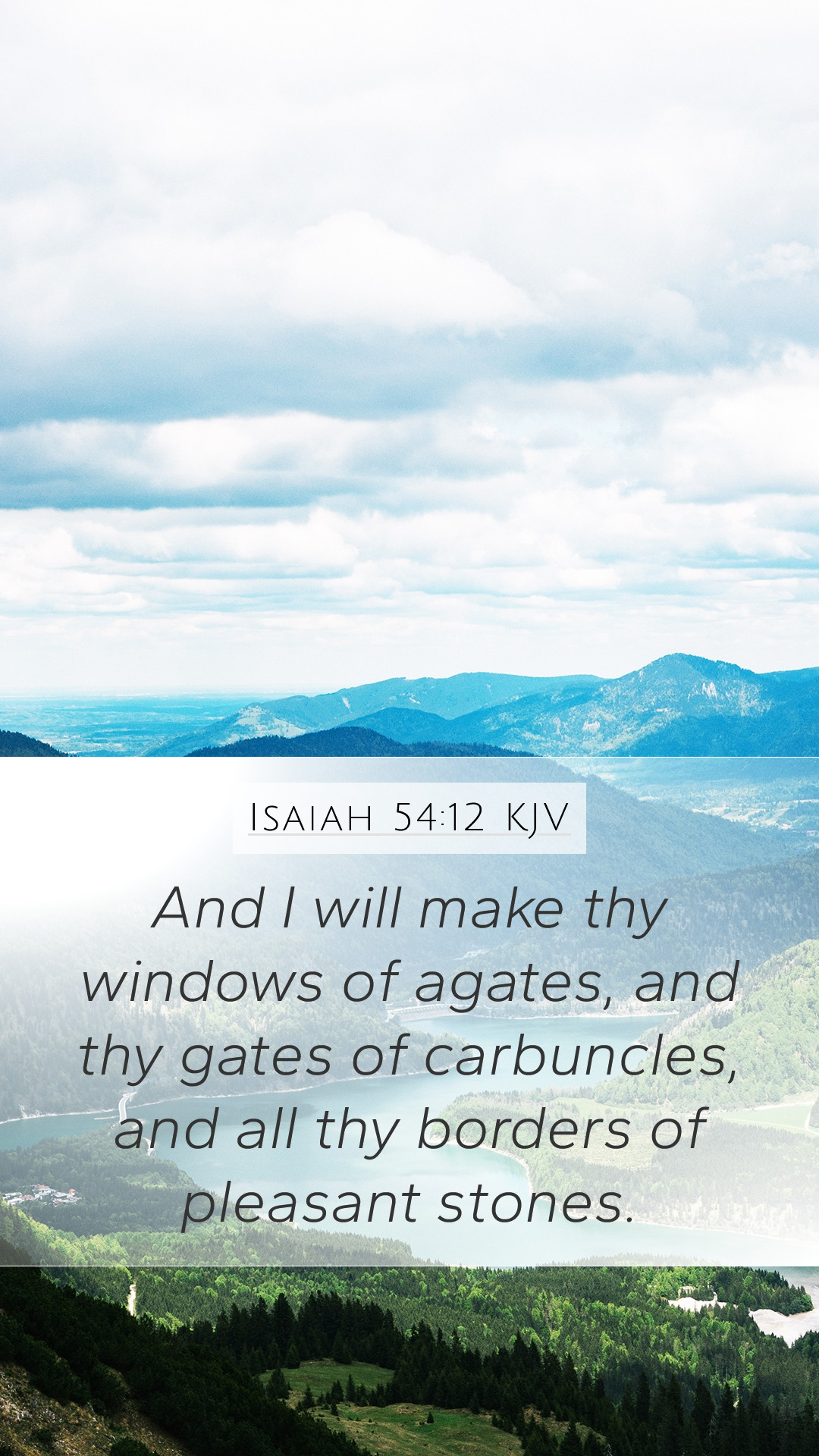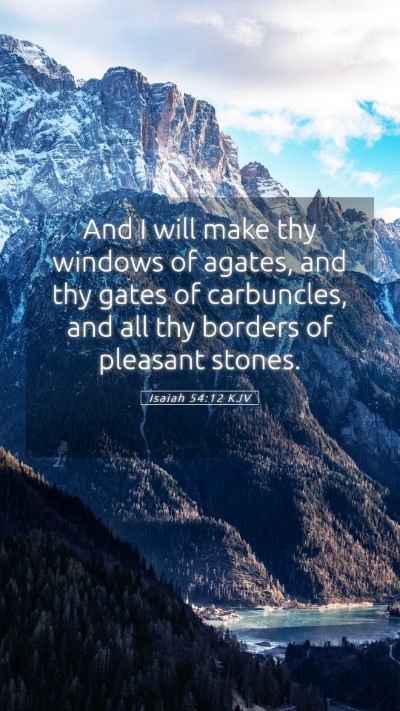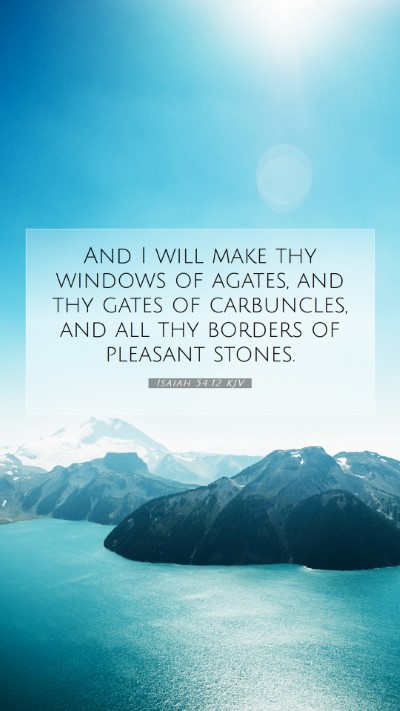Understanding Isaiah 54:12
This commentary provides an in-depth exploration of Isaiah 54:12, drawing insights from public domain sources, including the renowned commentaries of Matthew Henry, Albert Barnes, and Adam Clarke. Through this analysis, we aim to elucidate the meaning of this verse, enhancing the reader's understanding of Scripture through a thorough Bible verse commentary.
Bible Verse Text
"And I will make thy windows of agates, and thy gates of carbuncles, and all thy borders of pleasant stones." (Isaiah 54:12, KJV)
Verse Overview
Isaiah 54 is part of a passage that speaks to the restoration and future glory of Zion, depicting the transformative nature of God's actions on behalf of His people. In this specific verse, the imagery of precious stones signifies beauty, wealth, and divine favor.
Interpretation and Commentary
-
Matthew Henry's Commentary:
Henry emphasizes the metaphorical language used in this verse. The mention of 'windows of agates' and 'gates of carbuncles' illustrates the resplendence and magnificence that God promises to His people. He interprets these references as indications of God’s provision and protection, suggesting that the city will be adorned with splendor reflecting God's glory.
-
Albert Barnes' Notes:
Barnes underscores the symbols of wealth and beauty that God will grant to His people. He notes that these precious materials represent blessings that are beyond mere physical constructs; they signify spiritual abundance and security. God's intention is to ensure that Zion will be a place of safety and joy, contrasting the previous desolation faced by the people.
-
Adam Clarke's Commentary:
Clarke elaborates on the verse by connecting these materials to the idea of divine governance. The 'gates of carbuncles' can be seen as a metaphor for strength and protection while 'windows of agates' symbolize the clarity and insight that God provides. This aligns with God's promise to be a refuge for the oppressed and a stronghold for those in need.
Significance of the Verse
This verse serves as a profound reminder that God's relationship with His people is one characterized by restoration and beauty. It invites believers to contemplate the depth of God's promises and how they manifest in both historical and present contexts.
Cross References
- Revelation 21:18-21: Describing the New Jerusalem adorned with precious stones, similar to the imagery in Isaiah.
- Matthew 6:20: “But lay up for yourselves treasures in heaven, where neither moth nor rust doth corrupt.” This verse connects the idea of divine provision and wealth that transcends earthly treasures.
- Psalms 87:3: “Glorious things are spoken of thee, O city of God.” This reinforces the theme of Zion being a place of beauty and significance in God’s plan.
Applying This Verse to Daily Life
For contemporary readers, Isaiah 54:12 is a powerful encouragement that despite any previous struggles or desolation, God promises restoration and beauty. Believers are reminded to look upon their spiritual lives and communities with hope, knowing that God's blessings might manifest in unexpected and magnificent ways. This verse serves as a call to embrace God's providence, reinforcing the significance of hope in personal and communal faith journeys.
Conclusion
In conclusion, Isaiah 54:12 encapsulates the richness of God’s promises to His people. Through the artistic use of precious materials, we find a deeper understanding of divine restoration and favor. This verse and its accompanying interpretations by historical scholars encourage readers to seek a more profound Bible verse understanding and certainly enhance one’s Bible study insights.
For those engaging in Bible study groups or seeking resources for online Bible study, this verse serves as a reminder that the significance and application of Scripture extend beyond academic analysis to the heart of one’s faith journey.


